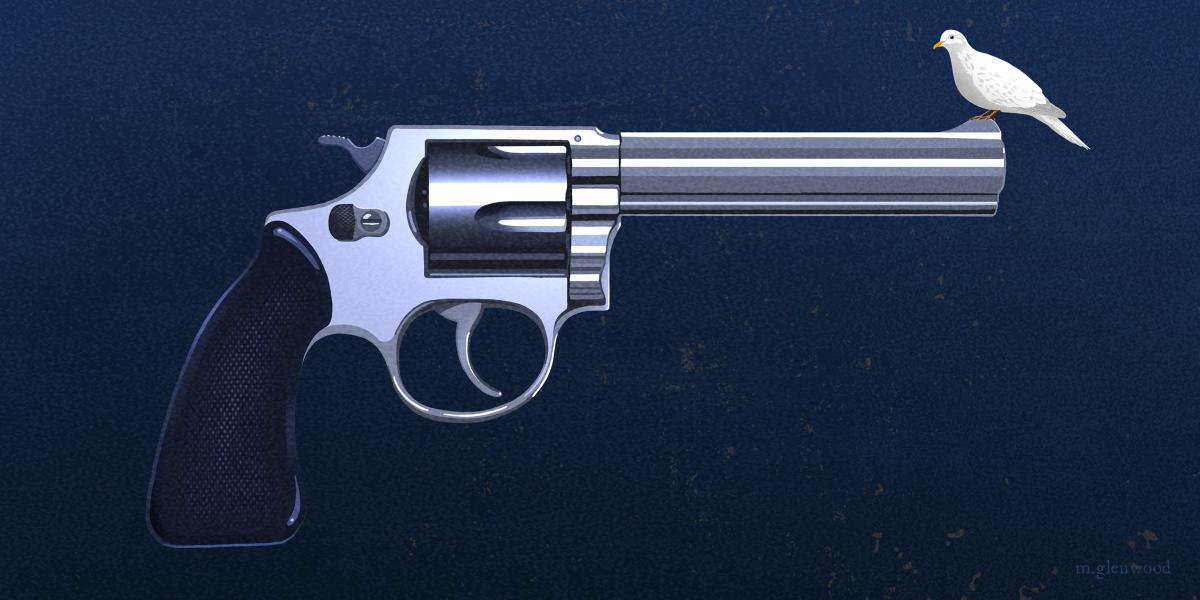What I’ve Learned from Two Gun Violence Epidemics
Smarter policies and better policing offer the best ways to stem the latest surge in gun deaths.
I came to Johns Hopkins in 1987 to get my doctorate and focus on public policies that enhance public health and safety. Initially, I focused on reducing motor vehicle deaths, but gun violence was engulfing U.S. cities in the late 1980s, including Baltimore. In neighborhoods near our campus, young lives were being lost to gunfire. The sharp upward trajectory looked like that of an uncontrolled infectious disease. Encouraged by my adviser, Stephen Teret, I decided to focus my career on preventing gun violence.
The current surge in homicides reminds me of when I entered the field. Just as in the 1986–1994 epidemic of gun violence, Black Americans living in neighborhoods of concentrated poverty and disinvestment have been the hardest hit. Social factors, including structural racism, contributed to both epidemics, but so have the proliferation of firearms, weaknesses in gun laws, and problems enforcing gun laws.
There are some positive differences in our response to the current epidemic of gun violence compared to the prior one. Previously, the response was dominated by more arrests, more incarceration, and increased investment in law enforcement. This time, policymakers are funding public health approaches. Community violence prevention programs have become integral to local strategies. Reducing violence and abuses by police and policies to promote racial equity have become high priorities.
But as new solutions have emerged, so have new challenges. Firearms constructed with kits purchased online and DIY videos are a new pipeline for firearms. Social media amplifies conflicts that are often settled with gunfire. Egregious acts of police violence have curtailed effective partnerships between law enforcement and community groups.
Even as gun violence surges in the U.S., I believe smarter, data-driven, and equity-centered policies are our best chance for curbing the current epidemic of gun violence and saving thousands of lives in the years to come.
I’ve studied community violence interruption programs in Baltimore since 2007 and have had the privilege of being friends with some of the programs’ brave workers like Dante Barksdale. He was an effective violence interrupter for Safe Streets Baltimore in the McElderry Park neighborhood and later worked for Baltimore City recruiting and mentoring violence interrupters.
Dante was murdered earlier this year. Like many others in Baltimore, I was devastated by his loss. I learned much from Dante and others in Safe Streets. They taught me about the deep deprivation and trauma that is common among those involved in gun violence. They also acknowledged that their ability to prevent shootings depends somewhat on law enforcement being a credible deterrent to gun violence. Sadly, that’s been lacking in Baltimore and many other cities.
While some in public health have called for abolition or dramatic defunding of police, I think public health professionals should partner with police to develop new models for community safety that minimize harms from the criminal justice system. Our goal should be to push law enforcement to focus more on eliminating racial disparities, reducing serious violence, and being accountable to community members. Our police should be trauma-informed and able to engage collaboratively with multiple sectors.
To stem the current surge in gun violence, we need smarter policies to reduce gun availability in risky contexts. The Center I lead has helped strengthen laws to keep firearms from individuals subject to domestic violence restraining orders and advance the adoption by 19 states and the District of Columbia of extreme risk protection order laws. Our research provides evidence that strong background check requirements that include handgun purchaser licensing can reduce the diversion of guns for criminal use, firearm-related homicides and suicides, mass shootings, and law enforcement officers being shot. We know that states with these policies have rates of civilians being fatally shot by law enforcement that are about a quarter as high as those of states that lack them. Our national surveys show that three-quarters of Americans support these policies and a similar proportion of gun owners in states with purchaser licensing support the laws.
We also are rigorously studying laws governing civilians’ ability to carry firearms. Additionally, Cassandra Crifasi, our Center’s deputy director, is developing a virtual reality system to test civilians’ ability to make good decisions about when and how to use firearms that they carry in public. Her work could evolve into licensing requirements akin to the tests one must pass to drive a motor vehicle. We also have developed recommendations for proactive gun law enforcement for the Baltimore Police Department that would reduce biased stop and search practices and make the department more accountable to the community.
Even as gun violence surges in the U.S., I believe smarter, data-driven, and equity-centered policies are our best chance for curbing the current epidemic of gun violence and saving thousands of lives in the years to come.
